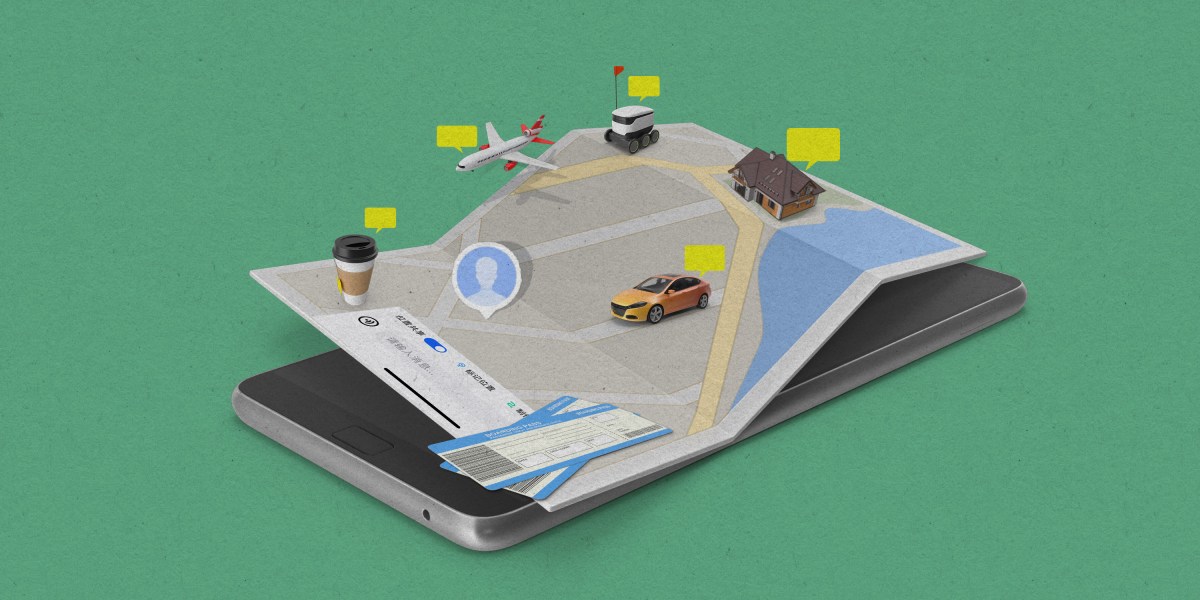This Chinese map app wants to be a super app for everything outdoors

Amap, for example, is one of the most widely used map and navigation apps in China today. But when I open it on my phone, I can see over 30 functions that you wouldn’t find on Western-equivalent apps.
Some of them still feel integral to the map experience, like recording when you last filled your car with gas, calling for roadside assistance, or comparing the prices of ride-hailing services. Others are pretty far removed: the app lets me check the purchase price of cars and contact a dealership, set up exercise goals and record my progress, and even—to my surprise—check out real estate listings. Just last week, Amap quietly added a new feature to its portfolio: you can hire a courier to do chores, like delivering a gift to the other side of the city.
Even though Amap had nothing to do with developing the cat-and-mouse game, it has tried to develop games in the past. (They didn’t catch on.) And now the company is riding the wave of cat-and-mouse popularity by adding new features to make the map more convenient for organizing a game; it also allows users to browse through the games being organized around the country every week.
To me, this all feeds into Amap’s goal of becoming an aggregator of local information and services. And it certainly seems that Amap wants to be your app of choice whenever you need any service outside your home. In fact, back in 2019, the company declared it was changing from a navigation app to a “national platform for going out.” (Amap declined to make anyone available for an interview for my story.)
What’s happening with Amap is a good example of how Chinese apps have always been obsessed with becoming super-apps. Wallet apps want to become social networks; social networks want to be personal loan providers; and food delivery apps are showing you TikTok videos and livestreams. Map apps are primed for such ambitions: almost every phone has a map app installed, and the scale of traffic any such app gets every day is invaluable to pushing users toward more and more services offered by the developer, in this case Alibaba.
Maybe it’s the quest for infinite scaling up that is original sin of Silicon Valley, or maybe it’s because there are successful examples in Asia, particularly WeChat and Alipay, for everyone to look to. The app ecosystem in China is often guided by this monopolistic notion that every app, no matter how niche it is, can and should become a platform for other barely related services. The result is that every app becomes a dense pile of trivial functions, most of which end up as nothing but a waste of storage space. Sometimes they even distract or obstruct users from doing what they originally intended to do with the app.
The dream of the super-app isn’t unique to China; Elon Musk is still supposedly working on transforming X into the all-in-one app for the West. But Chinese tech companies are already much further ahead. Unfortunately, their success has also revealed the risks that come with the super app—like the tight control they can have on freedom of speech, which I wrote about last year.
All this said, viral trends come and go. Even though I’ve enjoyed the games I played, I’m sure the popularity of cat-and-mouse will wind down after a while. I mean, how many people are still playing Pokémon Go? But the trend does serve as a good example of how a map app can actually be useful for something completely different from its initial purpose.






